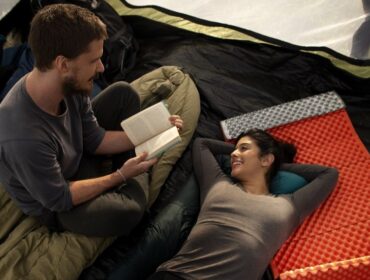You’ve picked the weekend, blocked off the calendar and told the kids. It’s official – you’re going camping as a family. Now what?
If your idea of family camping prep includes chucking some sleeping bags in the trunk and hoping for the best… you’re not alone. But the truth is, camping with kids takes a little more planning and a lot more snacks. The difference between a camping trip and a core memory for your kids often comes down to what you packed, what you forgot, and how prepared you felt heading in.
This family camping checklist is built to take the stress out of your trip. We’ll walk you through the gear, safety items, kid-specific comforts, and smart packing strategies to make your campout a success. Whether it’s your first family trip or your tenth, this guide keeps you organized, relaxed, and ready to actually enjoy the outdoors (without 18 trips back to the car).
Before You Pack, Plan the Experience
Before you even dig out the tent, think through the vibe you’re aiming for. Are you staying at a developed campground with bathrooms and picnic tables? Or are you heading off-grid where you’ll need to bring in water and manage your own waste?
Knowing your setup shapes your packing list. So does the age of your kids. Toddlers need different gear than teens. Babies require a lot more backup plans. If you’re camping in cooler weather, everything from your gear to your meal prep needs to adjust.
Start with your end goal – fun, rest, memory-making – and reverse engineer the trip from there. Planning around your family’s actual rhythms (nap times, picky eaters, night owls) makes a world of difference once the tent is zipped up and you’re in it.
What to Bring Camping with Kids (And What You’ll Regret Forgetting)
Packing for kids is part science, part gamble. You want to be ready for dirt, weather, hunger, mood swings, and unexpected bugs in shoes. A few things are non-negotiable, though.
You’ll need child-sized sleeping bags or pads, especially if you’re dealing with tiny humans who hate feeling swallowed up. Get more information on sleeping bags in our guide. A portable crib or inflatable bed can be the difference between sleep and, well, zero sleep. Bring extra layers even in summer – kids get cold faster and complain louder.
Don’t forget headlamps or lanterns that are easy for them to use. Let them each pack a small backpack with their own flashlight, stuffed animal, and favorite book. It helps them feel involved and keeps you from being their walking storage unit.
Also, snacks. More snacks than you think. And backup snacks. And then one more secret snack for that post-hike meltdown.
Camping Activities for Kids
Here’s the magic: you don’t need to entertain your kids 24/7. Nature does a pretty good job on its own. Still, it helps to have a few tricks up your sleeve.

Scavenger hunts are a hit—make a simple list of things to find or see (a pinecone, a red leaf, an animal track). Try nature bingo, DIY stick boats, rock painting, or nighttime stargazing. Build fairy houses with twigs and moss. Or bring a few favorite card games or coloring books for quiet time.
For older kids, journaling, knot-tying challenges, or even teaching them how to build a campfire can be surprisingly engaging. And if you’re car camping, bring a few active games like frisbee, cornhole, or glow stick tag.
You don’t need screens when there are bugs to chase and marshmallows to burn.
Family Safety First (and Always)
When you’re in the woods with little ones, safety isn’t a sidebar—it’s baked into everything.
-
Do a safety briefing: Before the tent goes up, gather the family for a quick “camp rules” talk. Show kids where they can and can’t explore, explain what poison ivy looks like, and make sure they know how to identify your tent (yes, they will forget).
-
Pack a full first aid kit: Go beyond a few band-aids. Include kid-specific medications like chewable pain relievers, antihistamines for bug bites or allergic reactions, insect sting pads, and thermometer strips. Add a small tube of antibiotic ointment and a pair of tweezers for splinters or ticks.
-
Learn basic CPR and first response: You don’t need to be an EMT, but knowing how to treat a cut, a sprain, or administer CPR is essential, especially if help is far away. Take a family first aid class ahead of the trip – it’s peace of mind in your pocket.
-
Use kid-safe sunscreen and bug spray: Look for formulas made for sensitive skin and apply them before everyone gets too distracted running around. Keep a stash in your daypack to reapply midday. Bug repellent wipes are easier to use on squirmy little arms and legs.
-
Dress for protection: Even if the days are warm, bring long-sleeve shirts and lightweight pants for evening protection against mosquitos, sunburn, and thorny underbrush. Think of clothing as your first line of defense.
-
Plan for water safety: If you’re camping near a lake, river, or even a creek, set clear rules: no swimming alone, always ask before approaching water, and wear a life jacket if feet are leaving solid ground. Even “strong swimmers” can get caught off guard in cold or fast water. The O’Brien Flex V-Back Life Jacket for Youth featuring flex fit design and a split V back for enhanced mobility and maneuverability.

-
Label kids with ID: Accidents happen. Make sure each child has a way to be identified in case you get separated. This can be as simple as a wristband with your name and phone number, a laminated ID card in their backpack, or a name tag sewn into their jacket.
-
Teach them the whistle rule: Pack a safety whistle for each child and teach them to blow it three times if they get lost or need help. Practice before your trip so they know it’s not a toy – it’s a signal.
-
Create a meet-up spot: Just like at amusement parks, designate a clear, central spot (like the campfire ring or a tall tree near the tent) where your child should return if they ever wander off or can’t find you.
-
Glow sticks at night: Clip a glow stick or LED light to each child’s zipper or backpack at dusk. It helps you spot them easily in the dark and makes nighttime bathroom runs much less nerve-racking.
-
Establish a buddy system: Whether it’s with a sibling or parent, kids should always have a buddy when exploring. Make sure the rule is: no going anywhere alone—even to “just look at that tree.”
-
Fire safety reminders: Teach kids to treat the fire ring like a no-go zone unless you’re with them. Remind them how hot ashes stay, even when the flames are gone. Consider bringing a collapsible fire barrier if you’ve got toddlers running wild.
Final Thoughts
Here’s the truth: no camping trip with kids goes perfectly. You’ll forget something. Someone will cry. The weather might turn. But you’ll also have moments where your kid looks up at the stars and says, “This is the best day ever.”
That’s what this family camping checklist is really about – making space for those moments. The gear matters. The prep matters. But what matters most is showing up, being outside together, and remembering that adventure looks a little different when there’s a toddler on your hip or a teenager rolling their eyes in a folding chair.
Plan what you can. Pack what makes it easier. And leave a little room for chaos and magic.
FAQ: Camping with Kids
What are the most important things to bring camping with kids?
Kid-sized sleeping gear, headlamps, layers, and snacks. Comfort and consistency go a long way outdoors.
How do I make packing for a family camping trip easier?
Use color-coded bags, delegate small tasks to kids, and work from a shared checklist to stay organized.
What age is best for a kid’s first camping trip?
Whenever you’re ready. Some start at 6 months. Others wait until potty training or preschool. There’s no perfect age – just your comfort.
How do I keep kids entertained while camping?
Nature scavenger hunts, crafts, easy hikes, storytelling, and glow-in-the-dark games all help. Most kids find their own fun outdoors.
Do I really need a family-specific camping checklist?
Yes. It helps avoid the stress of forgotten gear, missed meals, or unhappy little campers. Planning means more time enjoying.





